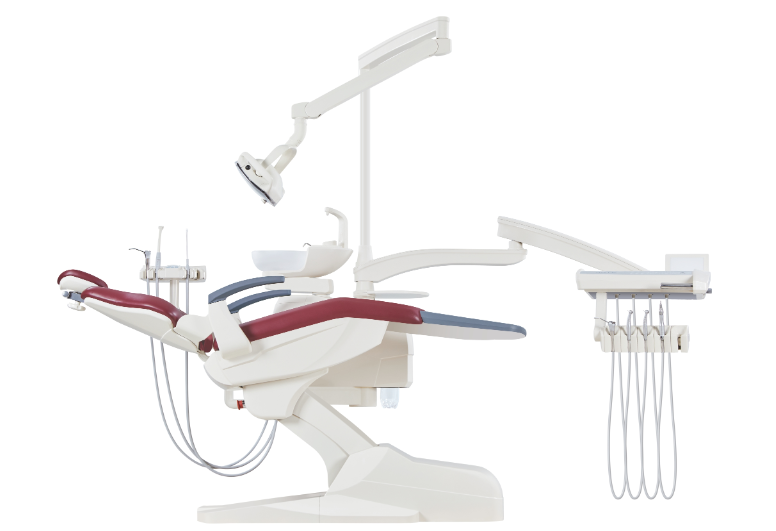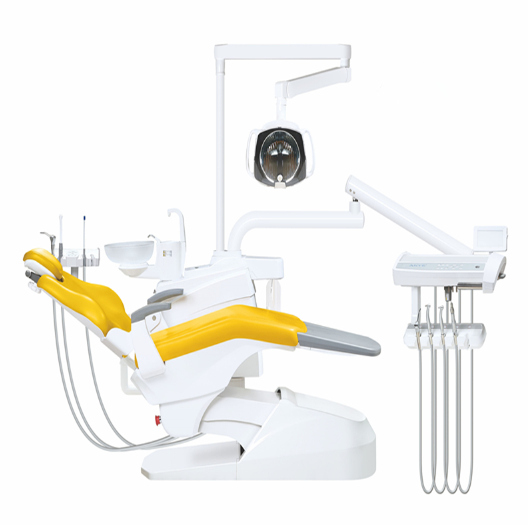What is A Dental Chair Vacuum System?
In the whole dental treatment, the unsung heroes ensuring smooth operations are the dental chair vacuum systems. These systems play a pivotal role in suction, waste management, and maintaining a sterile environment. Most people may underestimate the importance of dental chair vacuum systems. Then, today, the author will give a complete introduction to dental chair vacuum systems and guide you in choosing the right dental chair vacuum system for your clinics.
What is A Dental Chair Vacuum System?
A dental chair vacuum system is an integral part of dental equipment used in dental practices to manage suction and waste removal during various dental procedures. It's a system designed to create suction that aids in tasks such as saliva and debris removal from the patient's mouth, maintaining a clear field of vision for the dentist, and managing the waste generated during dental treatments.
These systems typically consist of a vacuum pump or unit, hoses, suction tips or nozzles, and a waste management system. They can be broadly categorized into three main types: central vacuum systems, portable vacuum systems, and hybrid vacuum systems.
These systems typically consist of a vacuum pump or unit, hoses, suction tips or nozzles, and a waste management system. They can be broadly categorized into three main types: central vacuum systems, portable vacuum systems, and hybrid vacuum systems.
How to Choose the Right Dental Chair Vacuum System?
To get the right dental chair vacuum system, you need to take these factors into the consideration.
●Practice Size and Volume
Understanding your practice's size and patient volume is fundamental. Larger practices with higher patient volumes require systems that can handle increased demand without compromising performance. Smaller practices might not need as robust a system but should still ensure it meets their specific needs.
●Performance and Suction Power
Different dental procedures necessitate varying levels of suction power. For instance, oral surgeries or complex procedures may require higher suction capabilities than routine cleanings. Factors such as horsepower, airflow, and efficiency directly impact the system's ability to handle these diverse requirements.
●Maintenance and Longevity
The maintenance demands and lifespan of the system are critical considerations. Some systems may have higher upfront costs but lower maintenance needs, which could result in long-term savings. Assessing maintenance requirements against initial investment helps in determining the overall cost-effectiveness.
●Noise Level and Patient Comfort
Reducing noise levels is crucial for patient comfort during procedures. Systems with noise reduction features or quieter operations contribute significantly to a more relaxed patient experience.
●Regulatory Compliance and Standards
Ensuring compliance with industry standards and regulations is non-negotiable for patient safety and legal adherence. Look for certifications and compliance markers to ensure the chosen system meets necessary safety and quality standards.
●Initial Investment vs. Long-Term Costs
Analyzing the initial investment against long-term costs helps determine the overall value of the system. Sometimes, a higher upfront cost might be justified by lower maintenance expenses or higher efficiency, resulting in reduced long-term costs.
●Financing Options and Return on Investment (ROI)
Exploring financing options can help manage the initial investment burden. Calculating the ROI based on factors like increased efficiency, reduced maintenance, and extended lifespan assists in making a financially sound decision.
Conclusion
Dental chair vacuum systems are essential for maintaining a clean and sterile environment during dental procedures, aiding in the comfort of patients and ensuring the dentist's visibility and efficiency.
These systems play a critical role in waste management, infection control, and the overall smooth functioning of a dental practice. The selection of the right system depends on factors like practice size, procedure requirements, maintenance needs, and compliance with industry standards.
These systems play a critical role in waste management, infection control, and the overall smooth functioning of a dental practice. The selection of the right system depends on factors like practice size, procedure requirements, maintenance needs, and compliance with industry standards.



Leave a comment